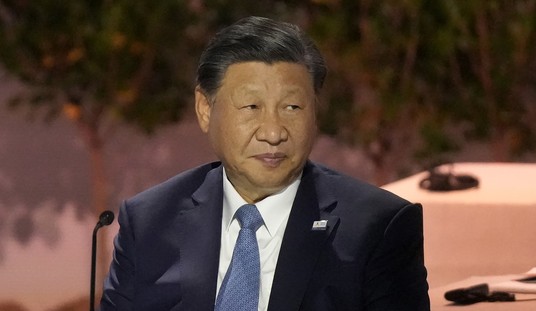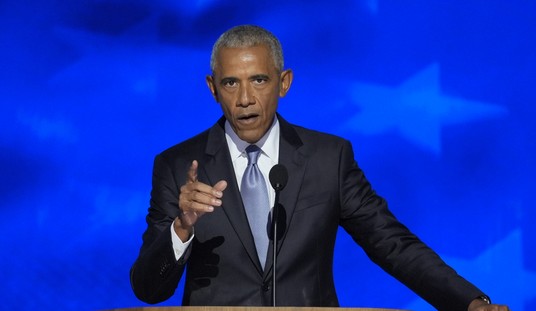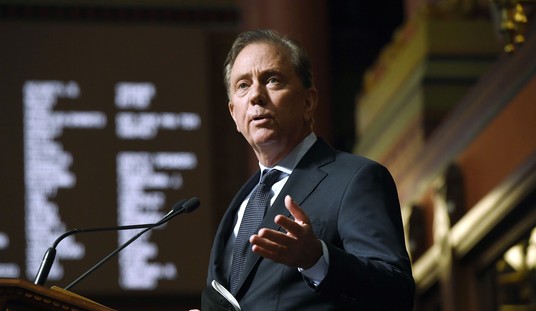Just about any analysis of the 2012 presidential election should start with words to the effect that this is a very close race, that close races can go either way, and that many different factors—convention speeches, debates, verbal miscues, overseas conflicts—can change the trajectory of such a race. A decision by Israel to attack Iran, for example, would certainly scramble things.
Still, this race shouldn’t be as tight as it is. Whether one looks at polling measurements of whether voters think the country is headed in the right direction, at consumer confidence, or at key economic measurements such as growth in gross domestic product, deviations in the unemployment rate, or the change in real personal disposable income, it is puzzling, to say the least, why polls show President Obama and Mitt Romney running neck and neck. Incumbents generally don’t get reelected with numbers like we are seeing today…
The Romney campaign did not lay down a layer of positive ads at the outset to give voters some understanding of who its candidate is. So when the deluge of negative ads about Bain Capital, layoffs, outsourcing, income taxes, and foreign bank accounts came, Romney had no Teflon coating to protect him. The dynamic was more like Velcro. That’s why even though he is running about even with Obama nationally, in the 11 key battleground states where the ads aired, he’s ahead only in North Carolina and possibly Iowa. Plus, pros in the TV-ad world point out that Obama has been sophisticated in his media-placement decisions, while Romney seems to be pursuing a gross-tonnage strategy.
Looking at these charts, you can readily see that 2012 is simply not a year like 2008 or 1980, which stand as the worst or second-worst presidential years in recent history in almost every category. Nor, of course, is it a year like 1984, 1964, or 1972, when the economy was going full-bore ahead. We also see 1968 stand out as a year where the economy was strong, but outside forces disrupted what should have been an easy re-election effort for the party in power.
Instead, this is a middling sort of year, like 1960, 1976, 2004, or 1992, where the economy is limping along, but not contracting. Those years have generally produced close elections. In fact, those elections describe what I see as something of a “95 percent confidence interval” for this election – i.e., I’m 95 percent sure the result will fall in between these elections — a 4-to-5-point Romney win (a la 1992) or a 2-to-3-point Obama win (a la 2004)…
This year, Barack Obama has an argument — he didn’t inherit the mess, and the economy is slowly expanding. That’s an argument that is probably good enough to get him to 46 or 47 percent of the vote. Similarly, Mitt Romney has a pretty good argument for electing a new president, one that will shore up his base and Republican-leaning independents. Thus, we should probably expect what we’re presently seeing in the polls: a close race, to be decided by a relatively small slice of the electorate.
While Obama is still drawing sizable crowds, they are nothing like the size of those who flocked to see him in 2008. In Las Vegas, Obama held a rally in a high school before more than 2,000 people but there was space for plenty more…
More significantly, the mood of the crowds is different. There is a sullenness, even resentment, that was not present in 2008. Ask an Obama supporter about their man and as often as not you will get a few words about him and then a demeaning attack on Romney or Ryan…
On Saturday, Obama held two events in New Hampshire, which has four Electoral College votes and on Tuesday and Wednesday he was in Nevada, which has six. Obama, moreover, won Nevada by more than 12 percentage points in 2008.
What does this tell is? That Obama is on the defensive and knows the only way he can win re-election is by the narrowest of margins, by ‘slicing and dicing’ – his own pejorative term – and eking out a 51 to 49 per cent victory, crawling across the line to 270 electoral college votes.
Mr. Law says Mr. Romney is fortunate that the president has focused on character assaults. If Democrats had persuaded voters that Mr. Romney’s agenda was wrong for the country, the perception would be hard to change at this stage of the campaign. But, says Mr. Law, when Mr. Romney presents evidence that he’s a “decent, competent, successful” person, the “negatives can fall away very quickly.”…
The Crossroads chief believes that the president’s greatest vulnerability is that he is “increasingly perceived as a deliverer of controversy. What he produces is controversy and fights and clashes. What he doesn’t produce is the result that people want. And when people look at Romney they look at somebody who doesn’t strike them as terribly ideological and if he has a fault, that’s it, right?”…
The Crossroads chief says he was surprised when he recently tested an Obama ad called “The Choice” with swing voters. In the ad, Mr. Obama speaks directly to camera. In a calm and reassuring voice, the president claims that Mr. Romney wants to help the wealthy while the Obama plan is to make the rich pay more to fund education and other priorities. Mr. Law thought the ad might be a winner for the president. But voters told him they had heard it all before from Mr. Obama. “I was shocked,” says Mr. Law.
What women want from candidates could not be more clear. In a poll my firm just completed for Lifetime television with Democratic strategist Celinda Lake, 41 percent of women said a candidate’s position on the issues is the biggest deciding factor when they vote. This trumped moral character (21 percent), background/experience (17 percent), record in elected office (9 percent), political party (6 percent) and spouse (2 percent).
For five straight years, women have said the economy and jobs are top issues. Health care and education are important, too. Women were four times more likely in 2010 than in 2008 to say government spending was a top concern. They prefer candidates who provide specific solutions on security — economic, job, national, personal, health — and affordability, which means meeting the costs of everyday life and keeping their jobs, homes and savings intact.
But you wouldn’t know that by listening to politicians today. Abortion and contraception, which do not appear in the top five most important issues to women in anyone’s polling, dominate the discussion. Unable to talk about a robust economy, solid employment numbers or long-term fiscal stability, Democrats plan to bet the house on the “war on women,” giving a prominent speaking spot to the president of Planned Parenthood at the party’s convention and screaming “women’s health!” when what they really mean is abortion. They’re saying comparatively little about heart disease, obesity or cancer. They may be overplaying their hand.
This should mean that Republicans have an opening. To capitalize on it, Romney and Paul Ryan should turn to metrics and big ideas. They love those things. Turns out, so do women.
Looming over that choice is the question of whether, at the end of this campaign, the winner can actually govern. Certainly, the raucous, often vicious nature of the combat so far has not been encouraging. One of us (David) has been attending conventions for some 40 years and has witnessed a distinct change in tone; listening to the hot rhetoric in both conventions in 2004, it suddenly became comprehensible how the country could have wound up in Civil War back in 1861 after another election full of ramifications for the nation’s future.
And the chasms between the two parties continue to widen before us. A deeply illuminating study, released a few days ago by the Washington Post and the Kaiser Family Foundation, has shown that over the past 14 years, the percentages of Democrats and Republicans who consider themselves “strong partisans” has shot up by about 20 points in each case.
So, in pushing voters to make a choice between sharply different visions, it is also imperative that the candidates look beyond November to the next four years, figuring out how they will bring the country together again when the brawl is over. The acceptance speeches are not just a moment to rally the base, they are also a place to begin laying the foundations of a successful presidency.







Join the conversation as a VIP Member